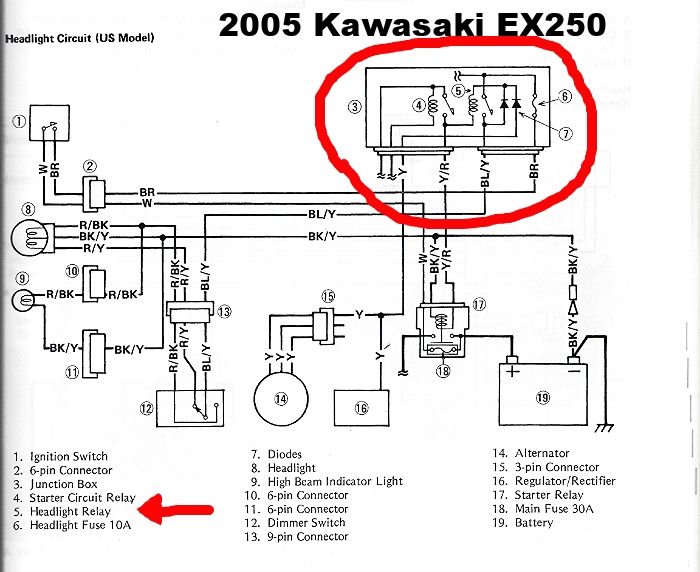Today's discovery/revelation is that I'm a
spoiled brat... when it comes to my expectations of the Bandit 400's electrical system.
Explanation:
My first motorcycle fuel injection project was a 2005 Kawasaki EX250. I guess I'm guilty of "looking down on my nose" at the EX250. I've always assumed that its systems were all rather basic examples of late-1980's motorcycle technology and design.
Well, today I came to the realization that there's a point where the EX250 beats the GSF400.
The EX250 has a headlight cutout relay that disables power to the headlight from key-switch-on until after the engine is started and power is coming through the rectifier/regulator. The GSF400 does not have this feature. I was spoiled by the EX250 and I just
assumed that the GSF400 would have this technology. Now I feel like a spoiled brat.
Here's what the Kawasaki EX250's headlight circuitry looks like:.

The most delicate moment in running a fuel injection system is cranking/starting. This is because during those first few seconds you need the battery to provide power for all of the system's electrical needs: ECU power, Fuel Pump, Starter Motor, Ignition Coils and more. The one thing you absolutely don't want is to have a large voltage drop in the system (this adversely affects all sorts of things). Having the headlight power disabled during these moments is pretty important.
But I'm in luck because back when Triumph Motorcycles started building bikes with fuel injection they (Triumph's design team) didn't bother to add in a headlight cutout relay. So the whole first generation of their fuel injected motorcycles are difficult to start and there's an aftermarket "plug-'n-play" headlight relay that was developed to cure the problem.
This relay is designed to fit motorcycles with H4 headlight bulbs, which is what the Bandit has. It will plug right into the Bandit's headlight in the headlight bucket. With this modification the Bandit's headlight will stay off until after engine startup. Then you have to flick the headlight switch to "bright" for a moment which activates the relay and the headlight will operate normally.
I ordered the item today, it should arrive in a few days. Until then I'll be doing my work on the Bandit with the headlight unplugged.